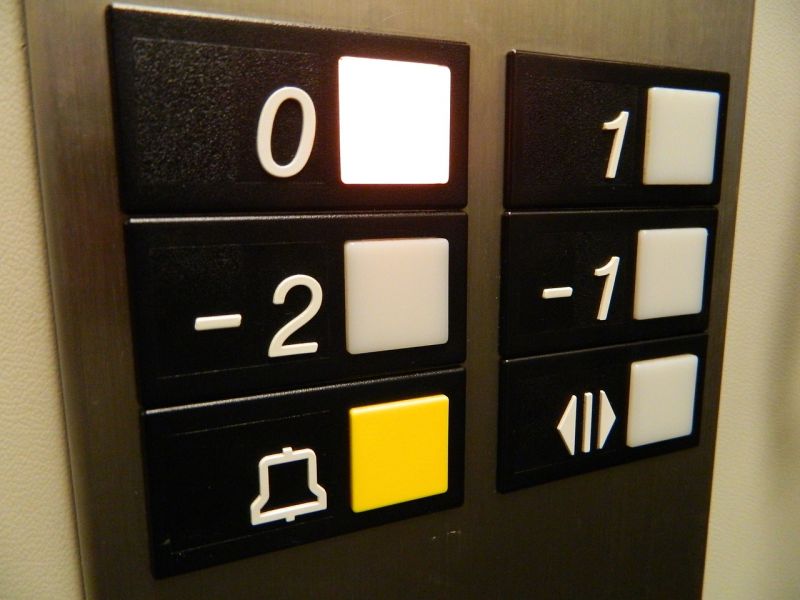The 2-senses principle states that information must always be presented for two complementary senses. This means for sight AND hearing or for sight AND touch.
On the one hand, there is of course the legal obligation for accessibility.
On the other hand, it is also a convenience for all recipients of information.
Because the 2-senses principle is also helpful for people without disabilities. Thus the principle has already found its way into our everyday lives, for example, with smartphones that ring and vibrate at the same time.
Whether people with reading difficulties, with visual or hearing impairments, with cognitive limitations, young children or the 50+ generation: they all benefit from the 2-senses principle. And thus, accessibility measures increase the satisfaction of many customer groups.
In general, whenever you offer any “formal” information.
But above all, the 2-senses principle should be applied to information in publicly accessible areas, such as transportation, office buildings, leisure facilities, hotels, or shopping malls.
This therefore applies to guidance systems, office signage, menus, safety instructions or the operating elements in elevators and ATMs.

Pyramid lettering and strong contrasts – the 2-senses principle in elevators
In many cases, the 2-senses principle is already standard.
e.g. all modern elevators can now display AND announce the floors. And they have a keyboard with pyramid writing or Braille. This is of course mounted in such a way that people in wheelchairs can easily reach it.
In the same way, traffic lights with acoustic signals and tactile guidance systems are already part of the cityscape.
Especially when it comes to alarm and warning signals, all information must always be offered according to the 2-senses principle.
Deaf people cannot perceive announcements, nor can they hear alarms. Therefore, smoke detectors, etc. must additionally alert by means of flashing lights.
For blind people, instructions in the event of a fire must also be available acoustically, and tactile guidance systems enable people to find the escape routes.
Good contrasts, few reflections and large lettering facilitate orientation in public spaces.
However, this is not sufficient for the 2-senses principle. Here it needs additional tactile pyramid writing, Braille or audio.
We have to consider however that only 20 to 25 % of all blind people can read Braille. Therefore, audio is probably the better choice.
For deaf people sign language is the best option.
Brochures, instructions for use, packaging or tourist information: If you can’t read them, you’re left out. And it is not only people with visual impairments, who have this problem, but also all those with reading difficulties. And there are more of them than we think. More…
Solutions include adapting information in digital formats to “screen readers”; that is, software that reads texts aloud on a PC. Or apps that can read texts aloud using smartphone voice assistants. Or specially prepared audio texts.
With information in text AND speech, i.e. for reading AND listening, the 2-senses principle thus not only enables accessibility, but also a wider reach.

The menu in text AND speech – a convenience for all!
With the SpeechCode software, you can turn any text into an audio file online. Three media are available for output:
A printed “Speech Code” for large print runs of e.g. brochures.
An “NFC Speech Tag” for guidance systems, signs and info points.
A “SpeechLink” for packaging, food or medicines.
Why accessible information in text AND speech can increase the reach of your message by up to 50 %.
read moreTo accommodate the varying needs of different use cases, SpeechCode offers several code and media options to best fit…
read moreThe accessible package insert as Marketing opportunity: How a cumbersome work for very few becomes an added value for…
read moreRead here what is important for orientation systems:
read morePros & Cons of Braille, tactile lettering and Audio Format
read moreHow to reach people with reading difficulties:
read moreWhy the generation 50+ is such an important target group
read moreFind out, why voice assistants can improve the reach of your messages and the comfort of the recipients.
read moreHow to increase the reach in marketing by 40 - 50 % in one beat
read moreRead the latest SpeechCode blogs and news on the topics Universal Design, Customer Focus and Digitalisation.
read moreHow print media gain more reach with accessiblity
read moreZeroCon23 - THE event for the accessibility topic
read moreWhy Universal Design instead of special solutions is the right approach for inclusion
read moreShowcase of an accessible and inclusive hotel
read moreWhy the 2-senses principle is important and how to implement it
read moreFind out how Siri and Alexa promote sustainability in marketing
read more